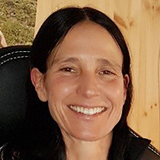The Challenges and Changes of IEC 61010
25 Feb 2020
What Manufacturers Should Know
IEC 61010 is a widely accepted series of safety standards for laboratory, process control, and test and measurement equipment. The series has a long history. It was first published in 1990 and various updates and significant technical changes have followed over the years. In 2016, the most recent version, Amendment 1 to Edition 3, was issued. Work on Edition 4 has already begun.
With a broad scope, the standard covers professional and non-professional products in a variety of industries, from medical to industrial. Changing or new technologies and field experience drive revisions or the development of new requirements. These changes and additions should be well understood by different teams within a company: compliance, design, engineering, regulatory and marketing.
IEC 61010-1:2010 Edition 3
The purpose of the standard is to ensure that hazards to the operator and surrounding area are reduced to a tolerable level. Requirements are based on certain types of hazards that apply for the product which is being evaluated to the standard including: electric shock and burn; mechanical hazards; effects of mechanical stresses, fluids/fluid pressure and radiation; spread of fire from the equipment; excessive temperatures; and liberated gases, explosion and implosion. Compliance is verified by inspection, type tests, routine tests and risk assessment.
Product-Specific Requirements
Particular, or product-specific, requirements (IEC 61010-2-x) are used in conjunction with IEC 61010-1. They supplement or modify corresponding clauses in the general standard to make it specific to a certain type of product or device. An example would be IEC 61010-2-010, which includes requirements for laboratory equipment used for heating materials. Manufacturers should pay attention to the information in each particular standard to ensure it is applicable to the product in question and that the information is used correctly.
References and Requirements
IEC 61010-1 and the related particular standards include references to other standards that should be considered. Manufacturers should be aware of the following:
- Risk assessment: The standard leaves some flexibility regarding the choice of risk assessment procedures, giving examples of procedures and references to standards that may be used, depending on product application.
- Functional safety: The standard references IEC 61508, but without detailed requirements.
- Hazardous locations: The standard excludes protective measures for explosive atmospheres and refers to IEC 60079. Products used in hazardous locations need to use both the applicable parts of the IEC 61010 and 60079 series.
- Safety critical components and subassemblies: The standard gives various conformity options such as compliance with a relevant IEC standard combined with application specific tests of IEC 61010-1 where necessary, or the use of IEC 61010-1 where no component standard exists. Components certified to non-IEC component standards are acceptable if a gap analysis shows that the requirements are at least as high as those of the relevant IEC standard.
- Lamps, lamp systems, and laser sources: Equipment with lamps and lamp systems emitting UV, visible, or infrared radiation, including LEDs, should not allow radiation to escape unintentionally, as this could cause a hazard. To mitigate this risk, the standard requires an assessment to IEC 62471. Products employing laser sources must meet the requirements of IEC 60825-1.
- Batteries: Batteries and battery charging shall not cause an explosion or produce a fire hazard as a result of excessive charge or discharge, if installed with incorrect polarity. Failure of a single component shall not lead to an explosion or fire hazard. Selecting suitably certified batteries to the relevant standard is recommended.
- Standards not referenced by, but used in conjunction with, IEC 61010-1 may also apply, depending on the product or setting.
Manufacturers should not rely solely on the IEC 61010 series but look beyond it to ensure compliance with relevant requirements in target countries. They may also have to consider product-specific standards not part of or referenced by IEC 61010. To learn more about this standard and best practices for compliance, download our complimentary white paper.

Claudia Sirch,
Regional Chief Engineer (EMEA)
Claudia Sirch is the global chief engineer for medical, laboratory, measurement and control equipment and laser products at Intertek. She has over 25 years of experience in the testing and certification business, and is a lead and technical assessor in the IECEE CB Scheme. She holds a Bachelor of Science in Engineering Physics from Munich University of Applied Sciences.